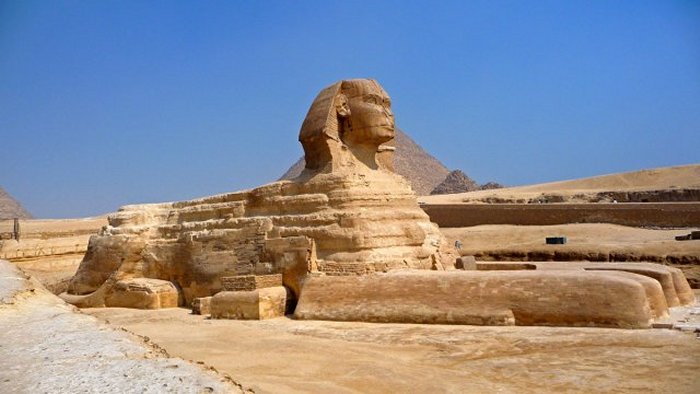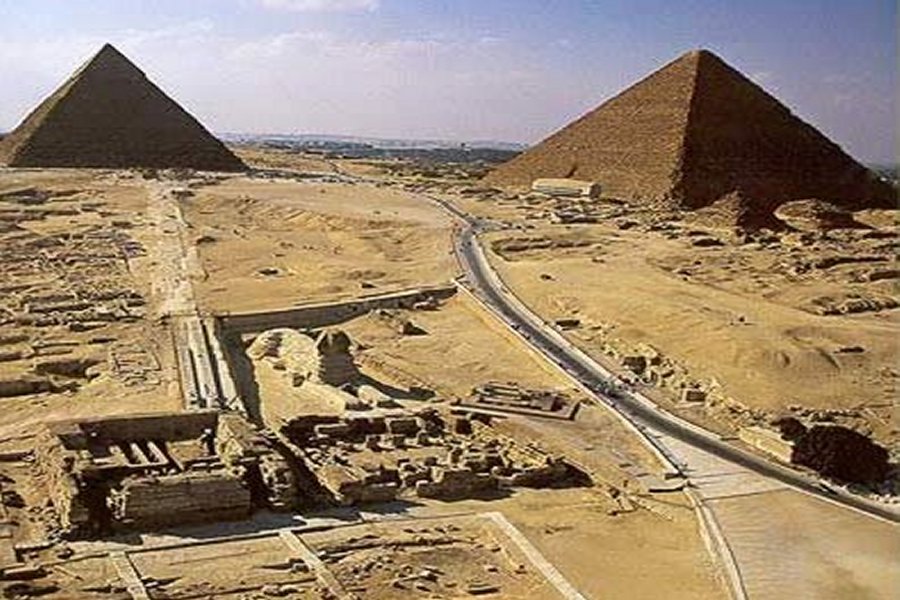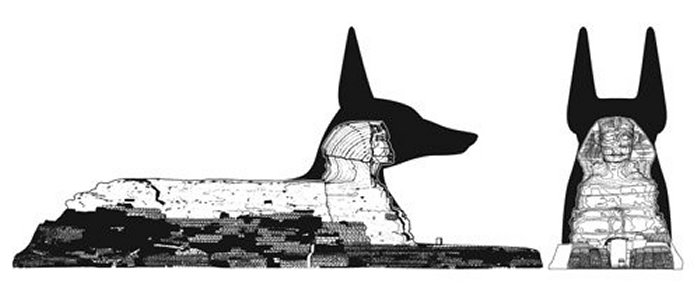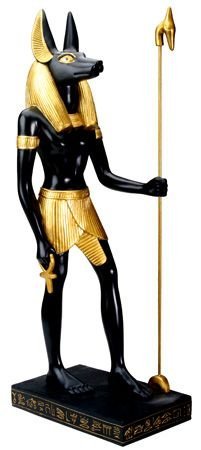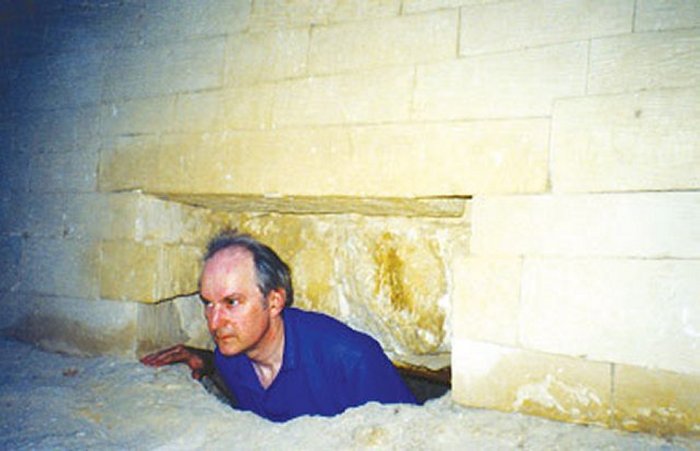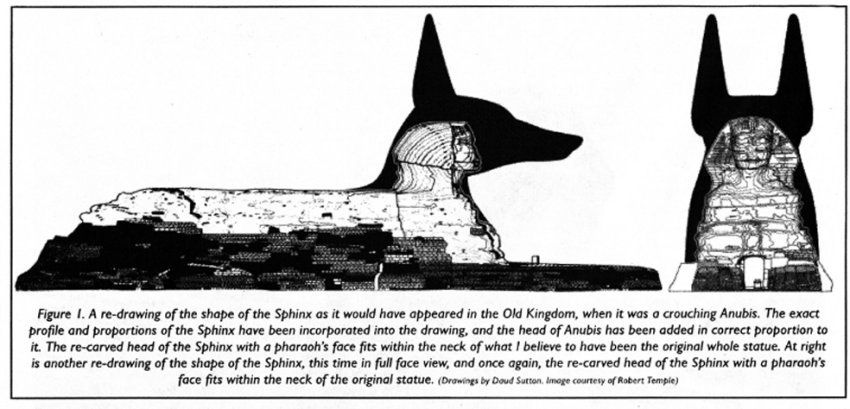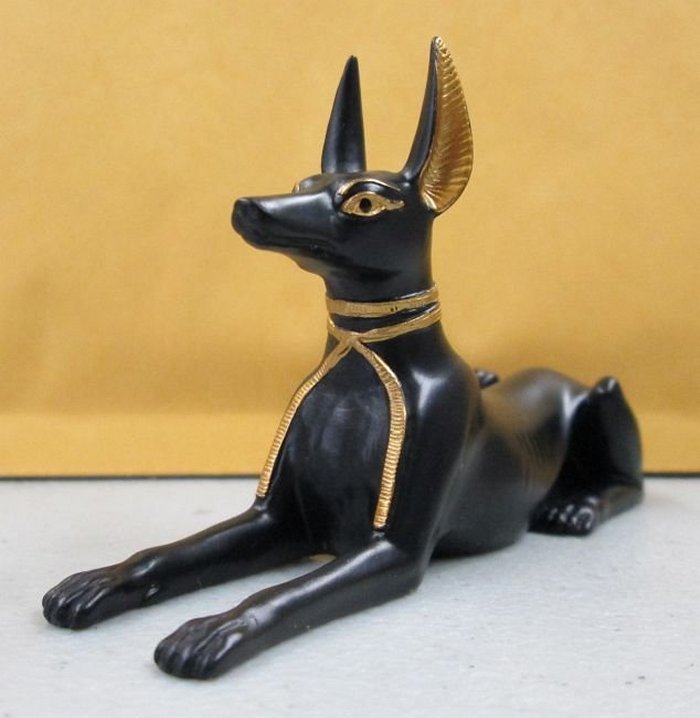What Was The Sphinx And What Is Wrong With Its Body And Head?
AncientPages.com - There has never been a satisfactory answer to what the Sphinx actually is or was. Anyone who goes to Giza can see for himself or herself that there is something ‘wrong’ with the Sphinx. It only takes an instant. The body is gigantic and the head is just a pimple.
The Egyptians never did anything like that, they were always meticulous about proportions in their art.
So how is it that we have this monster with a tiny head sitting there in the sand, then?
There are several other things wrong with the Sphinx. They are:
- The back is flat. Who ever saw a lion with a flat back, no big chest, and no mane?
- The Sphinx is sitting in a deep hole in the ground. Why is that? Why is it not sitting somewhere high up so that it can show off?
- There is a ruined temple right in front of the Sphinx, with a wall practically up against its nose, and no door in that wall. Why obstruct the view of the Sphinx from the front like that? And if the temple was for worshipping the Sphinx, why is there no access from the temple to the Sphinx, so that you can’t even get to it?
- The pit in which the Sphinx sits seems to be deeply eroded, as if by flows of water. What caused all that? It looks as if water has poured down the sides. On the other hand, there are no such vertical erosion patterns on the Sphinx itself, which instead has clear horizontal erosion patterns. How can these two different patterns at right angles to each other be reconciled? And what could possibly have caused either of them?
None of this makes any sense if you think about it. Of course, many people don’t think. They just gawp and move on, their brains in neutral.
But when my wife Olivia and I first saw the Sphinx many years ago, we just stood there in astonishment and both agreed that the whole thing was wrong, wrong, wrong.
So now after many years of work, we think we have found some answers.
Naturally, any new idea about anything that ‘everybody knows’ makes conventionally thinking people enraged, and (2) makes anti-establishment people delighted. No prizes for guessing which side I’m on.
Let me first declare my position on what has become something of an entrenched notion amongst my fellow anti-Establishmentarians.
I do not believe that the Sphinx is 12,500 years old. Nor do I believe in ‘ancient rain’.
I do believe that the Sphinx is older than conventionally believed. But I do not believe it is thousands of years older, or anything of that kind.
I do believe there is water erosion at the Sphinx site, but I do not believe it had anything to do with ‘ancient rain’, nor do I believe there was anything there to be eroded at the time any ‘ancient rain’ fell.
So what is the answer, then?
Sphinx Island & Moat
The water of the Nile in those days, at the time of inundation once a year (which no longer happens because of the Aswan dam), came right up to the edge of the Sphinx Temple, where there are even quays in front. So what I believe happened was that the water of the Nile was let into the Sphinx Pit, which I now call the Sphinx Moat, by some simple water-raising devices, led along the narrow channel between the Sphinx Temple and the Valley Temple (the two structures in front of the Sphinx), and its flow was controlled by a series of sluices and water gates.
The signs of these sluices and gates, with their many bolt holes and so forth, no longer exist, because new stones and cement have been laid over them. But not to worry! I took plenty of photographs of them before they disappeared, and those are all reproduced in our book. Everyone can then see it all very clearly.
The reason why the temple wall is in front of the Sphinx is to act as the fourth barrier to the water. The reason why there is no door in the wall is that it would have let the water out.
The horizontal erosion on the side of the Sphinx (where it is not covered by ‘restoration stones’) is because the Sphinx was sitting in the middle of a moat filled with water. The vertical erosion on the sides of the pit, especially the south side, is because of the continual dredging of the Moat due to the windblown sand accumulating there. Every time the Moat was dredged, water poured down in torrents onto the sides, leading to vertical erosion, accentuated by the natural cavities in the limestone bedrock.
So I think the Sphinx was, amongst other things, an island!
This immediately solves the puzzle of the evidence recorded by the fifth century BCE Greek historian Herodotus, who said that King Cheops let water in from the Nile to surround an island at Giza. Here it is!
Whose Head is on the Sphinx?
So we have got an island. Now what do we do with it? And why is King Cheops’s head the size of a pimple on the front of this large flat-backed lion, surrounded by water? What’s going on?
But wait! Who says that is King Cheops’s head? Some say it is King Chephren’s head, but if you have ever seen Chephren’s head on that huge statue in the Cairo Museum, you know they look nothing alike at all, since Chephren has a long face and the Sphinx has a round face, just for starters, and there’s plenty else that’s not the same too.
At this point of my wonderings, I began to feel really uncomfortable. I generally know when something doesn’t fit. I may not know what does fit, but I more often know what does not.
And that face is neither Cheops (not that we know what he really looked like anyway, as the only likeness of him that survives is a three inch-high ivory statuette, which could be your Uncle Tony or even your Auntie Madge for that matter) nor old Chephren Long-Face. So who is it?
It was at this point that I discovered one of those forgotten sources which keep falling into my lap, and in this case it was an article written by a German archaeologist named Ludwig Borchardt long before the Sphinx was excavated, when only its head and neck were sticking above the sand.
Borchardt used to go and stand there and look at it. In those days, you could look the Sphinx in the eye and he wouldn’t even flinch, in fact he smiled back. Nowadays, he’s very stuck up, with his head high above us if we stand at his feet, so you can’t make out the details of his head all that well.
Borchardt got to thinking. He noticed that the Sphinx was wearing eye-paint stripes (no comment, pharaohs have the right to do what they like as consenting adults in the privacy of their own Sphinx Pits), and he knew that those were not worn in the period known as the Old Kingdom, when Cheops and Chephren lived. He noticed the details of the stripe patterns in the strange headdress worn by the Sphinx. The face had to be that of a pharaoh, since this headdress was the sacred religious headdress of the pharaoh known as a nemes. But Borchardt, who was head of the German Institute at Cairo and therefore knew a thing or two, realised that those stripe patterns were also not used in the Old Kingdom.
He started to do some research on nemes headdresses, and he discovered that those particular stripe patterns were only used in the Middle Kingdom period, hundreds of years later than Cheops and Chephren. He wrote this all up in technical form and published it in a distinguished scholarly periodical (in German of course, but I have translated it and it appears as an appendix to our book), and concluded that the Sphinx had been carved in the Middle Kingdom Period, not in the Old Kingdom period.
But everybody laughed at poor old Borchardt. Who ever heard of such a thing? The Middle Kingdom! Borchardt must have gone crazy! And then the Sphinx was excavated in 1926, and finally completely excavated in 1936, and it was perfectly clear to everyone that the Sphinx was much older than the Middle Kingdom. But everybody forgot that Borchardt had never seen the Sphinx’s body at the time he wrote the article, he was only talking about the head.
So I have reopened the case and concluded that the head was recarved in the Middle Kingdom, just as Borchardt said, and what is more, I believe I can even identify precisely which pharaoh’s face that is. Of course, to find that out, you really need to see the book.
However, it is all very well identifying the face on the Sphinx. Some people might be satisfied just doing that. But no, it’s like watching a film noir without knowing the ending. Even if you know whodunnit, you still want to know the motive.
“Everybody knows” Herd Mentality
So what was the Sphinx before it had that guy’s face carved on it? Well, to figure that one out you have to try to figure out what the Sphinx was before that pharaoh got his chisels on it. This draws one’s attention to the flat back. “Everybody knows” that the Sphinx has the body of a lion. As soon as I hear that “everybody knows” something, I know that it must be wrong. I have a pathologically anti-herd mentality. All you have to do is tell me “everybody knows” something, and I will instantly disbelieve it. That is because crowds are always wrong. Crowds have about as much sense as a mollusc.
I started from the premise that the Sphinx was not a lion at all. Millions of people see it every year, from all over the world, and they all “know” that it is a lion. So that means that it cannot possibly be one. They “know” it is a lion because they have been told that it is a lion. The Germans were told that Hitler was their saviour and so they “knew” it, the Russians all “knew” that Stalin was like a gentle father, who would look after them. Yes, everybody, or at least everybody they knew, “knew” these things. And people also all once “knew” that the Earth was flat, and that the Sun went round the Earth. Those things were all “known.” But were they true?
If it wasn’t a lion, what was it? Well, it had to be an animal with a straight back, with no huge chest, and no mane. It also had to be an animal that crouched like that with its legs stuck out in front of it. (There is no use looking too closely at the paws, as they are completely covered in restoration stones, and have been shaped to look like “what everybody knows,” in order to re-confirm the consensus falsehood which everybody has agreed to believe in.)
Anubis – Guardian of the Necropolis
The Sphinx is crouching there at the entrance to the Necropolis like a guardian. Well, there it is! It is a guard dog! The ancient Egyptians had a god called Anubis, who was a crouching wild dog, generally referred to as a jackal (although strictly speaking there were no jackals in Egypt, and Anubis was really a wild dog species which is now extinct).
Anubis was the guardian of the Necropolis, the guardian of the dead, and he was often depicted in the precise position of the Sphinx – and famously in a statue found in the Tomb of Tutankhamun as well – so that his image is familiar to almost anyone who has ever had an interest in ancient Egypt.
In Figure 1 I show the drawing I commissioned which shows how the recarved head of the Sphinx was carved out of the neck stump which remained on the Sphinx after the original statue was mutilated by the rampaging mobs who smashed up everything they could on the Giza Plateau during the period of chaos known as the First Intermediate Period, between 2200 and 2000 BCE.
It was the easiest thing in the world to knock the ears and nose off the Sphinx when the Sphinx was Anubis. You couldn’t put them back because the Sphinx was carved out of the solid bedrock, and the pieces must have been smashed to bits anyway. So the later exhibitionist pharaoh could even tell himself he was doing a pious act and ‘restoring’ the statue by flaunting himself, just as, say, Madonna helps the world, doesn’t she? Tom Cruise is also saving the world, remember? Yes, we all know that all celebrities are getting their pictures in the papers only for noble causes, and it has nothing to do with wanting people to look at them, or with such a low thing as vanity.
Speaking of movie stars, the Sphinx is now so botoxed and has had so much plastic surgery from crazy ‘restoration’ (which is all shown in great detail in our book) that he could easily get a lead part in a blockbuster. But his ‘nose job’ didn’t go so well, as it is still missing. It was hacked off in the 13th century by a fanatical imam named Sheikh Mohammed, who wished to purge Egypt of non-Islamic influences. He got as far as the nose, at least. (The story that the nose was shot off by Napoleon’s soldiers is false.)
So now we have a crouching Anubis as an island, surrounded by a little lake. And at last we have something which students of the ancient texts can suddenly recognise. For the most ancient surviving Egyptian texts, known as the Pyramid Texts, often speak of a sacred place associated with the Giza Necropolis called Jackal Lake. And here it is!
Now we are getting somewhere. It is all beginning to make sense. In our book we gather together the many ancient texts which refer to Anubis guarding the Necropolis, situated at Giza, being beside a causeway, and being very large. We also reproduce Fourth Dynasty Giza tomb reliefs showing a giant Anubis, which may be intended as actual depictions of the Sphinx.
Secret Chamber Beneath the Sphinx
Most people who are intrigued by Egyptian mysteries have been wondering for a long time whether there might be any secret chamber beneath the Sphinx. I have crawled around inside the Sphinx, and I describe the tunnel which exists in the rear portion of the Sphinx’s body, as well as the vertical tunnel carved out of the bedrock beneath the Sphinx’s rump, and reproduce photos of these. In Figure 2 you see a photo which Olivia took of me with my head sticking out of the Sphinx’s ass, which perhaps proves how well I know him.
Then an amazing thing happened. I came across a passage in one of the old books which I collect, in this case one published in 1715, which described a chamber beneath the Sphinx and gave an eyewitness account of it! I was astounded. The book referred to earlier accounts of this chamber, but neglected to say who had written them or when they had been published. Slight problem! How was I to find these books?
If you went into the British Library and told a librarian you needed a book published before 1715 which described a chamber beneath the Sphinx, you would be told to come back when you had the author’s name or the title of the book. All I had to go on was ‘a book mentioning the Sphinx before 1715’, so how did I do it?
That is where my special abilities come in, which enable me to obtain information which others seem not able to obtain. I am what you might call an information retrieval expert, and I do not need to know anything about the field in order to obtain its ‘concealed’ information. There is no such thing as concealed or destroyed information: it is all there in Information Space if you have access.
Everyone knows about the emails which people think they have deleted from our computers, but which can be recovered by computer data recovery experts (as part of a criminal investigation, for instance). Well, there is a higher version of that, which enables all information which has ever existed in any material form to be accessed from the wholly non-material realm of Information Space.
A book that verifies the existence of secret underground chambers beneath the Sphinx and demonstrates its origins as the Egyptian god of the dead, Anubis
• Includes an anthology of eyewitness accounts from early travelers who explored the secret chambers before they were sealed in 1926
• Reveals that the Sphinx was originally carved as a monumental crouching Anubis, the Egyptian jackal god of the necropolis
Shrouded in mystery for centuries, the Sphinx of Giza has frustrated many who have attempted to discover its original purpose. Accounts exist of the Sphinx as an oracle, as a king’s burial chamber, and as a temple for initiation into the Hermetic Mysteries. Egyptologists have argued for decades about whether there are secret chambers underneath the Sphinx, why the head-to-body ratio is out of proportion, and whose face adorns it.
In The Sphinx Mystery, Robert Temple addresses the many mysteries of the Sphinx. He presents eyewitness accounts, published over a period of 281 years, of people who saw the secret chambers and even went inside them before they were sealed in 1926--accounts that had been forgotten until the author rediscovered them. He also describes his own exploration of a tunnel at the rear of the Sphinx, perhaps used for obtaining sacred divinatory dreams.
Robert Temple reveals that the Sphinx was originally a monumental Anubis, the Egyptian jackal god, and that its face is that of a Middle Kingdom Pharaoh, Amenemhet II, which was a later re-carving. In addition, he provides photographic evidence of ancient sluice gate traces to demonstrate that, during the Old Kingdom, the Sphinx as Anubis sat surrounded by a moat filled with water--called Jackal Lake in the ancient Pyramid Texts--where religious ceremonies were held. He also provides evidence that the exact size and position of the Sphinx were geometrically determined in relation to the pyramids of Cheops and Chephren and that it was part of a pharaonic resurrection cult. Read more
Unfortunately, I have never met anyone who seems to be able to access this material methodically and systematically. Most human beings can access it in a feeble and flickering fashion, by means of what is called ‘intuition’ or ‘hunches’. Perhaps it is just as well that proper access to all this information is limited. After all, the purpose of our being here in the material world is to see how we cope without information. That is why people like myself find it so difficult to communicate what we know when we somehow, in a way we do not understand, acquire information from Information Space. It is mostly not intended for circulation, and maybe I should not even be doing it. When I reveal such information to people, they never believe me anyway, so I generally do not bother.
I cannot explain how I access it. I seem to ‘see through matter’ in some way which is difficult to describe, and I see the Information behind it on the other side. Matter becomes increasingly transparent to me every day anyway, and I no longer believe in it. On only one occasion was I so desperate that I ‘raped’ Information Space. That was when our beloved dog Kim was mistakenly locked in a room with a digital security code. Because she was old and ill and needed water, and might otherwise die before I could get someone with the code to come, I ‘accessed’ the numerical code, punched it in, the door opened, and I released her. I didn’t do it instantly. I first made two or three hysterical wrong attempts and wasted precious minutes through being over-stressed. I made myself try to remain calm and then got it right. This meant that I actually had to access the whole number of several digits, none of which was known to me. Really, we are not supposed to do this sort of thing, but my dog was more important to me than protocol.
Also important to me is a Larger Dog, the Sphinx! I feel almost as affectionate towards him as I did… well, no, that would not be fair to Kim. But I also like the Dog Star. In fact, I am a sucker for dogs, I really am. I am not a cat person, even though I am a great fan of the original version of the film ‘Cat People’ (1942). Watch it sometime! See my review of it on my website.
I was eventually able to find 281 years’ worth of published eyewitness accounts of the chamber beneath the Sphinx, including detailed information about exactly where it was, its size, and the fact that it contained the remains of a wooden coffin. Because the chamber was described as having hieroglyphics on the walls, I am certain that it was what archaeologists call ‘an intruded burial’, but it must have been a royal one, as a shaft was carefully constructed and a chamber cut in one of the most important monuments in Egypt, within the sacred precincts of the royal Necropolis. The shaft was sealed with cement by Émile Baraize in 1926.
A century earlier, Henry Salt also sealed some openings and passages elsewhere at the Sphinx, and was sharply criticised for it by the French Count de Forbin. All of this is described in full detail in our book. So, yes, there is a ‘secret chamber’ beneath the Sphinx. And the information in our book proves this beyond all possibility of doubt. But no, it is not original and does not date from the time of the Sphinx’s carving. Also, it is empty, so there is no gold or treasure. But if we could just read what it says on the walls!
Another thing I was able to demonstrate is that the Sphinx and the three Giza pyramids were part of a single unified design concept of the Giza Plateau. The position and size of the Sphinx is determined precisely in relation to the three pyramids, in a manner never before noticed. This is shown and explained at great length in the book, and it is not really possible to summarise that material, as it is too lengthy and detailed for a brief description. I can say, however, that it was part of a resurrection cult.
In the process of explaining this in detail, I even have occasion to explain the true nature of those bizarre reliefs in a crypt at Denderah which have excited a great deal of speculation, the ones with the ‘lightbulbs’, although they are 2,500 years more recent, and their only connection is through the symbolism.
I hope everybody will get a lot out of looking through our book, and, who knows, maybe even reading it. Stranger things have happened.
Written by: Robert Temple - New Dawn
This article has been republished with permission of New Dawn Magazine
Copyright © New Dawn If you appreciated this article, please consider a digital subscription to New Dawn.
More From Ancient Pages
-
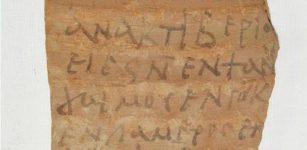 Rare Discovery Of More Than 18,000 Inscribed Pot Sherds Document Life In Ancient Egypt
Archaeology | Jan 31, 2022
Rare Discovery Of More Than 18,000 Inscribed Pot Sherds Document Life In Ancient Egypt
Archaeology | Jan 31, 2022 -
 Emperor Caligula’s Ancient Garden Found Under Piazza Pia In Rome, Italy
Archaeology | Jul 26, 2024
Emperor Caligula’s Ancient Garden Found Under Piazza Pia In Rome, Italy
Archaeology | Jul 26, 2024 -
 Ancient Cotton Fibers Dating Back 7,000 Years Discovered In NE Israel
Archaeology | Dec 19, 2022
Ancient Cotton Fibers Dating Back 7,000 Years Discovered In NE Israel
Archaeology | Dec 19, 2022 -
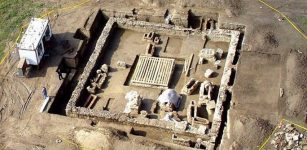 Viminacium Ancient Roman Camp: Sarcophagus With Skeletons, Rich Grave Goods Found In Serbia
Archaeology | Jun 5, 2018
Viminacium Ancient Roman Camp: Sarcophagus With Skeletons, Rich Grave Goods Found In Serbia
Archaeology | Jun 5, 2018 -
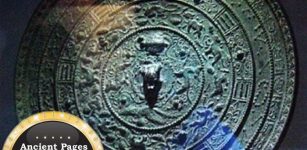 Mystery Of Ancient “Magical” Mirrors – Some Of The Strangest Objects In The World
Artifacts | Apr 21, 2011
Mystery Of Ancient “Magical” Mirrors – Some Of The Strangest Objects In The World
Artifacts | Apr 21, 2011 -
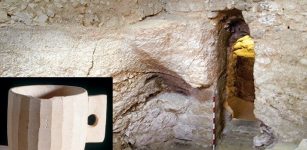 Childhood Home Of Jesus May Have Been Found Underneath The Sisters Of Nazareth Convent
Archaeology | Nov 24, 2020
Childhood Home Of Jesus May Have Been Found Underneath The Sisters Of Nazareth Convent
Archaeology | Nov 24, 2020 -
 6,000 Years Ago, Europe’s Oldest Cities Relied On Fertilizer And Plant Protein, Isotope – Analysis Shows
Archaeology | Dec 19, 2023
6,000 Years Ago, Europe’s Oldest Cities Relied On Fertilizer And Plant Protein, Isotope – Analysis Shows
Archaeology | Dec 19, 2023 -
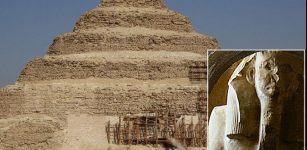 New Theory On “Dry Moat” At The Pyramid Of Pharaoh Djoser
Archaeology | Jul 3, 2019
New Theory On “Dry Moat” At The Pyramid Of Pharaoh Djoser
Archaeology | Jul 3, 2019 -
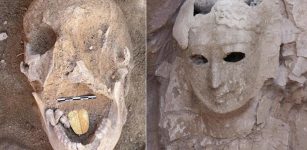 Ancient Egyptian Mummies With Golden Tongues Discovered In Alexandria
Archaeology | Feb 3, 2021
Ancient Egyptian Mummies With Golden Tongues Discovered In Alexandria
Archaeology | Feb 3, 2021 -
 Were Neanderthals Really As Well Adapted To A Life In The Cold As Previously Assumed? New Study
Archaeology | Apr 26, 2022
Were Neanderthals Really As Well Adapted To A Life In The Cold As Previously Assumed? New Study
Archaeology | Apr 26, 2022 -
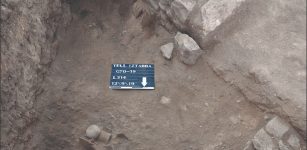 Ancient Town’s Destruction Dated With Help Of Chicken Bones And Snail Shells
Archaeology | Aug 17, 2022
Ancient Town’s Destruction Dated With Help Of Chicken Bones And Snail Shells
Archaeology | Aug 17, 2022 -
 Strange And Unexplained Events In Transylvania – One Of The Most Mysterious Places In Europe
Featured Stories | Jan 6, 2022
Strange And Unexplained Events In Transylvania – One Of The Most Mysterious Places In Europe
Featured Stories | Jan 6, 2022 -
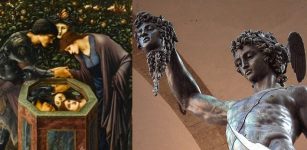 Perseus – Courageous Adventurer Who Fulfilled A Prophecy
Featured Stories | Jul 31, 2018
Perseus – Courageous Adventurer Who Fulfilled A Prophecy
Featured Stories | Jul 31, 2018 -
 LIDAR Advanced Technology Spotted Rare Pre-Columbian Florida Village – Highly-Prized Producer Of Beads
Archaeology | Nov 10, 2019
LIDAR Advanced Technology Spotted Rare Pre-Columbian Florida Village – Highly-Prized Producer Of Beads
Archaeology | Nov 10, 2019 -
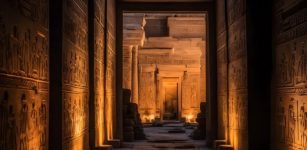 The Mystery Of Ancient Ever-Burning Lamps
Ancient Technology | Sep 10, 2024
The Mystery Of Ancient Ever-Burning Lamps
Ancient Technology | Sep 10, 2024 -
 On This Day In History: Admiral Richard E. Byrd Made His First Flight Over The South Pole – On Nov 29, 1929
News | Nov 29, 2016
On This Day In History: Admiral Richard E. Byrd Made His First Flight Over The South Pole – On Nov 29, 1929
News | Nov 29, 2016 -
 Evidence Of An Advanced Ancient Civilization In Texas That Mysteriously Disappeared
Featured Stories | Jul 18, 2024
Evidence Of An Advanced Ancient Civilization In Texas That Mysteriously Disappeared
Featured Stories | Jul 18, 2024 -
 Immigrants In Prehispanic Cancun Were Treated Just Like Maya Locals
Archaeology | Oct 26, 2023
Immigrants In Prehispanic Cancun Were Treated Just Like Maya Locals
Archaeology | Oct 26, 2023 -
 Mystery Of The East Asian Lineages In Europe 45,000 Years Ago Solved – Population Hub Out Of Africa Holds The Clues
Archaeology | Apr 7, 2022
Mystery Of The East Asian Lineages In Europe 45,000 Years Ago Solved – Population Hub Out Of Africa Holds The Clues
Archaeology | Apr 7, 2022 -
 Arian Tower: Pyramid-Shaped Mausoleum Of Nobleman Was Built On Top Of Medieval Hill Fort
Archaeology | May 19, 2018
Arian Tower: Pyramid-Shaped Mausoleum Of Nobleman Was Built On Top Of Medieval Hill Fort
Archaeology | May 19, 2018

